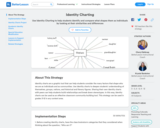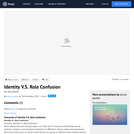
In this lesson, students consider what it means to be an American, using an opinion piece about the “American Identity Crisis” and several related videos as central texts. They answer a series of text-dependent questions, debate their opinions, write a brief constructed response, and make their own video that reflects their interpretation of “the face of America.”
- Subject:
- Social Science
- Material Type:
- Lesson Plan
- Provider:
- Southern Poverty Law Center
- Provider Set:
- Learning for Justice
- Date Added:
- 11/30/2016















